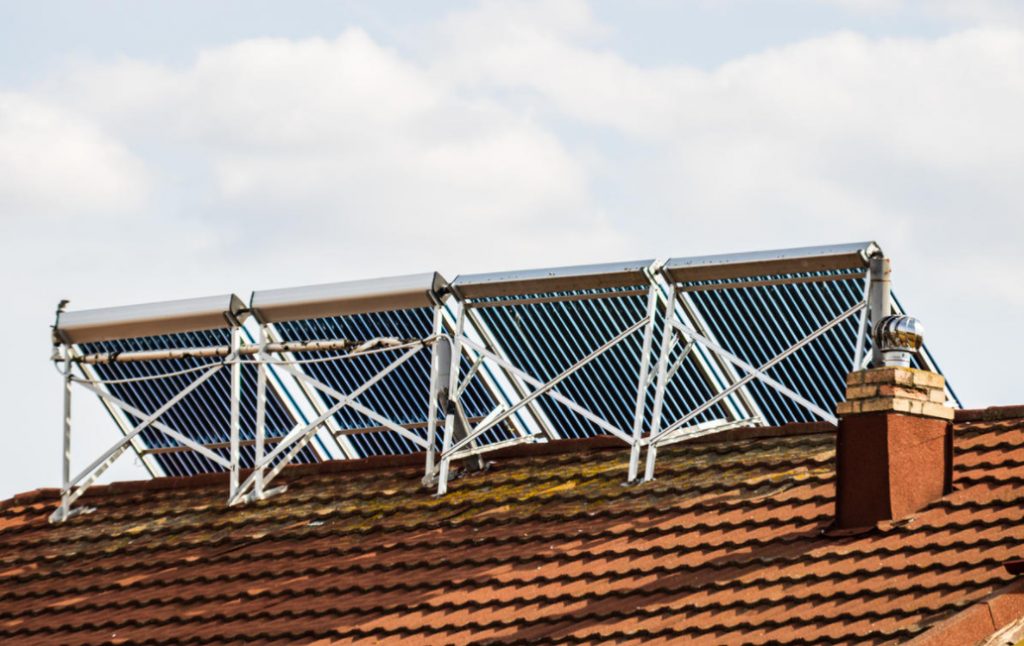In modern private homes, not only traditional, but also alternative generators of thermal energy are increasingly used: such hybrids can significantly save on heating, especially if there is no possibility to supply the main gas. But before making a decision to purchase such equipment, it is necessary to understand how it works, and in which case its use will be appropriate.
Boiler + solar collector
The basis of the system is a set of vacuum-type solar panels and an electric or solid fuel boiler. It starts at the moment when the energy of the sun ceases to be enough for full-fledged heating and hot water supply. Important components are also a storage tank with a built-in heat exchanger, a circulation pump, as well as an automatic control unit.
The principle of operation
All components of the system work in such a way as to complement each other if necessary. Exactly as much heat is produced as is really needed.
Absorbing heat from the sun, the panels heat the antifreeze circulating in the collector tubes. Entering the heat exchanger, it, in turn, heats the water. The temperature of antifreeze and water is set manually, and then adjusted automatically. Heated water accumulates in a tank, the volume of which, depending on the size of the housing, can reach up to 3000 liters (Fig. 1).
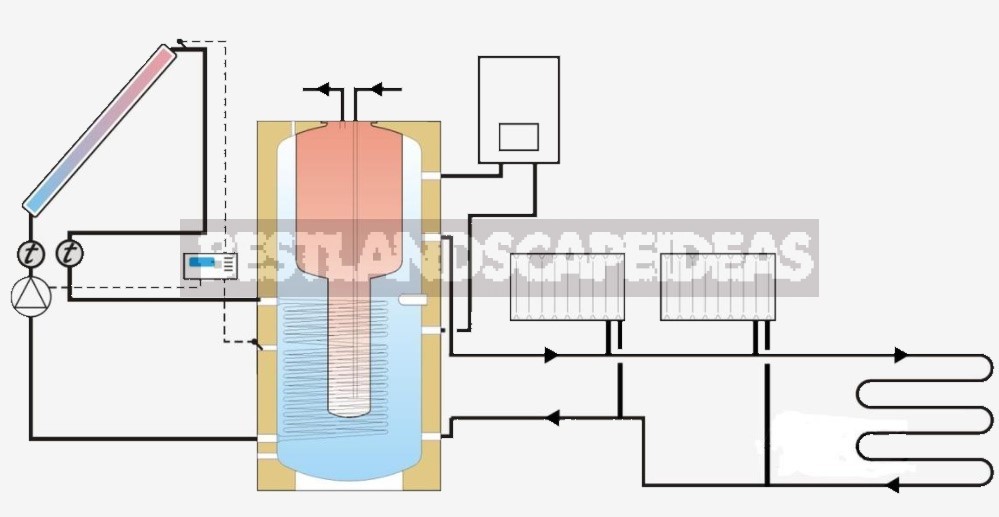
Further, the storage tank distributes water immediately through two circuits – heating (underfloor heating) and hot water supply. This can be done by a special design of the heat accumulator, assembled according to the principle of “tank in tank”: thanks to it, the water inside the tank is divided into the one that will be used for heating and the one that will be needed for household needs (shower, washing dishes, etc.)
If there is not enough sun and its heat is not enough (in winter, as well as at night and on cloudy days), the computer unit automatically turns on the boiler. After heating in the boiler, the further passage of water occurs along the same chain. Thus, the system is completely autonomous. The need for human intervention in its work is almost excluded. And the savings are due to the fact that 70% of the necessary thermal energy will be generated by the solar collector.
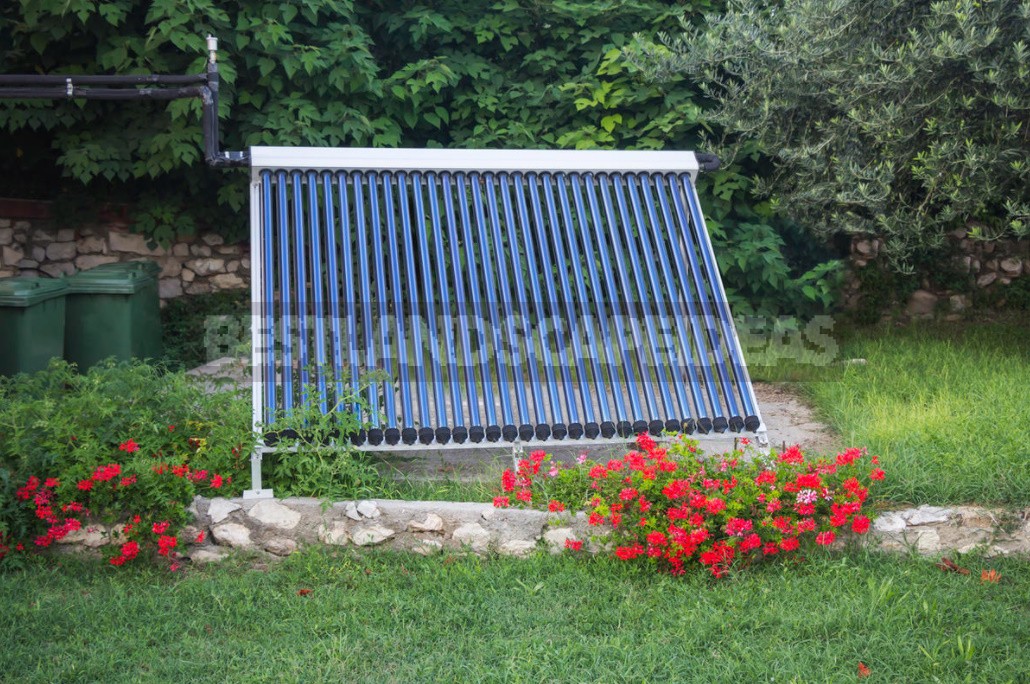
Advantages and disadvantages
The system is powered by the sun almost all day, so the need for electricity is the most minimal. Especially in summer, when there is no need to turn on the heating. Electricity is used only for the operation of the circular pumps and the control unit. The boiler is connected mainly at night, and at this time the cost of electricity supply is the lowest. If the boiler is not electric, then you can save on solid fuel, which is also not very cheap.
However, there are drawbacks. Firstly, the system works perfectly only in regions with a large number of sunny days a year. In the same place, where the weather is often cloudy, the savings will not be so noticeable.
Secondly, in case of frequent power outages, you will have to use a generator or install solar panels, which entails additional costs. Thirdly, fully automated control requires professional maintenance, and this is also worth something.
Boiler + heat pump
In this scheme, the heat pump completely replaces the solar panels. Its design includes a geothermal circuit placed in the ground, as well as a compressor, condenser and evaporator located in a separate unit inside the house (Fig.2).
The evaporator and condenser act as heat exchangers. The same electric or solid fuel boiler is used as a backup heat source. There is also a storage tank. The control is carried out in automatic or semi-automatic mode.
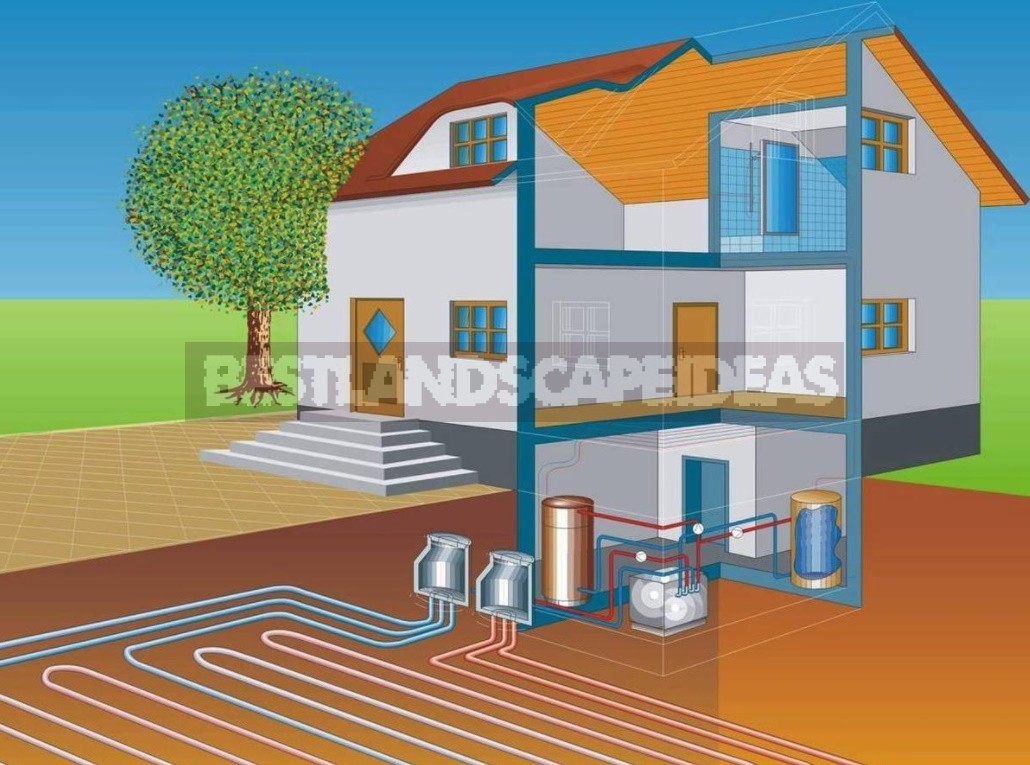
The principle of operation
Located at a depth below the freezing of the ground (2.5- 100 m), where the air temperature does not fall below 5-70 ° C, the pump circuit absorbs underground heat. The resulting thermal energy is transferred to the antifreeze circulating along the circuit, which transfers it to the evaporator. Next, the refrigerant (freon) comes into play, taking heat from the evaporator and entering, then into the compressor.
As a result of compression in the compressor, the refrigerant heats up and enters the condenser, and already there the heat is transferred to the water. Leaving the condenser heated to 60 ° C, the water first turns out to be in the storage tank, and then in the heating devices.
Temperature sensors monitor the heating of water: if it does not heat up enough (for example, in severe frost), they immediately send a signal to the controller, after which the electric boiler automatically turns on.
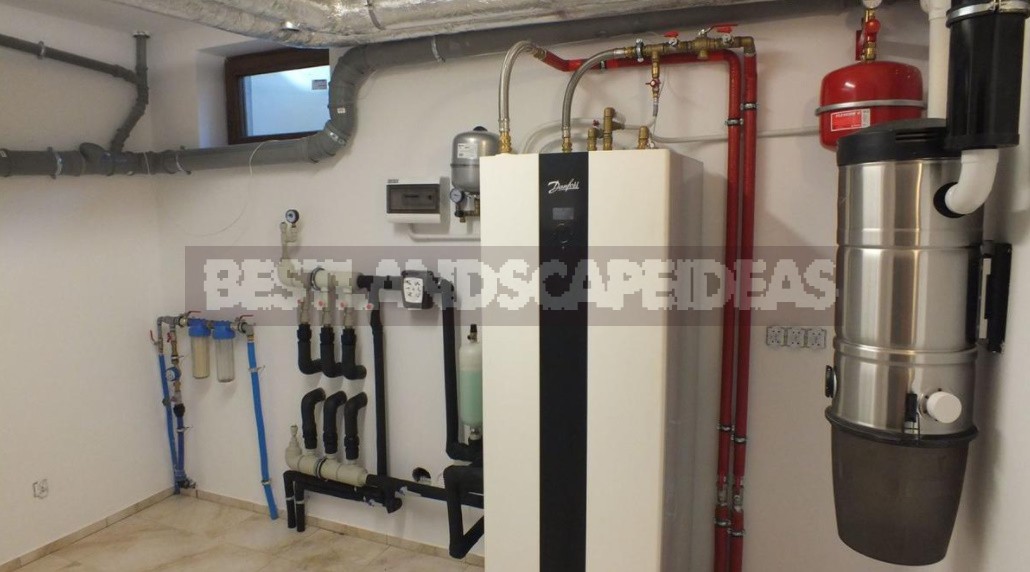
Advantages and disadvantages
The heat pump can be used not only for heating, but also for cooling: in summer, with the help of a reversible valve, the device will take excess heat from the room.
The efficiency of the pump is determined by the ratio of the amount of energy required for its operation to the amount of heat generated. For geothermal installations, this coefficient is equal to three. That is, having spent 1 kW of electricity, the pump supplies 3 kW of thermal energy.
The device is absolutely safe, since neither open fire nor combustible substances are used during its operation. The main disadvantage is the high cost of equipment and its installation.
However, the installation costs will be two times less if we are talking about a device that will take heat not from the ground, but from a reservoir: earthworks in this case can not be carried out. But this requires the presence of a pond or lake right next to the site.
It is advisable to purchase a geothermal heat pump only if it is not possible to carry main gas into the house. Or, if such an eyeliner and its further maintenance will cost even more, which also happens.
Heat pump + solar system
The system includes solar collector panels and various elements necessary for the operation of the heat pump. Fan coils and underfloor heating are used to heat the air. Accumulation and distribution of water for heating and hot water supply takes place in a heat accumulator.
Heat transfer in the circuits of the geothermal installation and in the solar system circuit is carried out in different ways: in the solar system through a separate heat exchanger (buffer), and in the heat pump using the “evaporator-compressor-condenser” chain. Both the collector and the pump are combined into a single circuit in such a way that they can function both together and separately (Fig. 3).
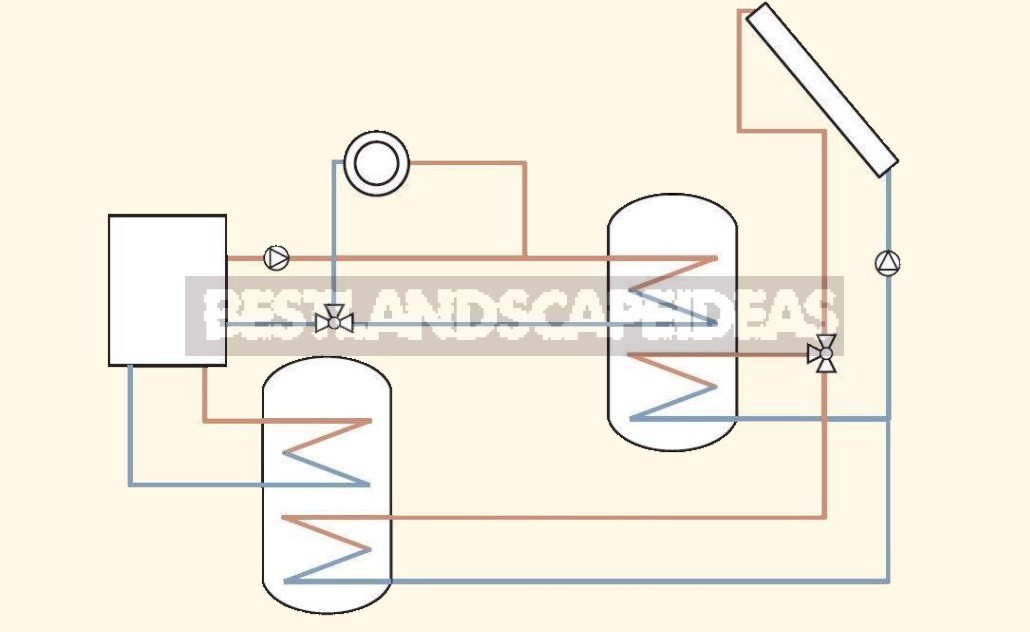
The principle of operation
In summer, the heat pump works mainly for cooling, and solar collectors heat water for household purposes. In late autumn and winter, depending on the weather, the devices are most often switched on alternately: during the day – collectors, at night – a pump.
If there is little or no sun at all, heating occurs only with the help of geothermal equipment. As in other hybrid systems, the water heating temperature and the order of switching on the units are controlled by automation, and the movement of liquids along the circuits is due to circulation pumps.
Advantages and disadvantages
The presence of two complementary devices – solar panels and a geothermal installation allows you to use electricity in very small quantities. Thanks to the natural renewable heat in the house, a comfortable temperature is maintained both in winter and in summer, which does not require any serious annual costs. However, the initial cost of this system is also still too high.
For the same reason, the payback of the equipment can be delayed for 10 or even 20 years. In addition, to operate such a hybrid in regions with a cold climate, you will have to stock up on a backup heat source (electric boiler), which will increase not only initial investments, but also annual heating costs.
In the presence of central gas supply, the use of such a hybrid system is impractical.
